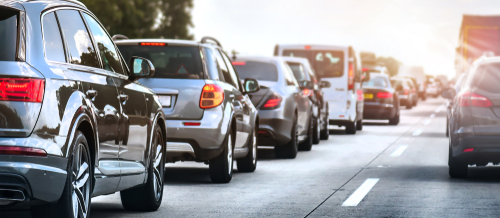
A new machine learning algorithm created at the U.S. Department of Energy’s Pacific Northwest National Laboratory will help urban transportation analysts identify and relieve traffic patterns in their cities.
The tool, called TranSEC, uses Uber driver datasets and other publicly available traffic sensor data to map street-level traffic flow over time. Then, using machine learning tools and computing resources available at the national lab, TranSEC can create an overall picture of the city’s traffic.
“What’s novel here is the street level estimation over a large metropolitan area,” said Arif Khan, a PNNL computer scientist who helped develop TranSEC. “And unlike other models that only work in one specific metro area, our tool is portable and can be applied to any urban area where aggregated traffic data is available.”
The tool can utilize machine learning to analyze sparse and incomplete information by connecting segments of information with missing data, giving analysts nearly real-time street-level estimations of traffic.
The PNNL team used public data from the 1,500-square-mile Los Angeles metropolitan area to create a traffic congestion model by order of magnitude, from hours to minutes. The high-performance computer resources at PNNL is what makes the near real-time analysis possible.
“TranSEC has the potential to initiate a paradigm shift in how traffic professionals monitor and predict system mobility performance,” said Mark Franz, a meeting attendee and a research engineer at the Center for Advanced Transportation Technology, University of Maryland, College Park. “TranSEC overcomes the inherent data gaps in legacy data collection methods and has tremendous potential.”
PNNL is working to make the tool available to traffic planners nationwide and predict it could navigate autonomous vehicles in the future.